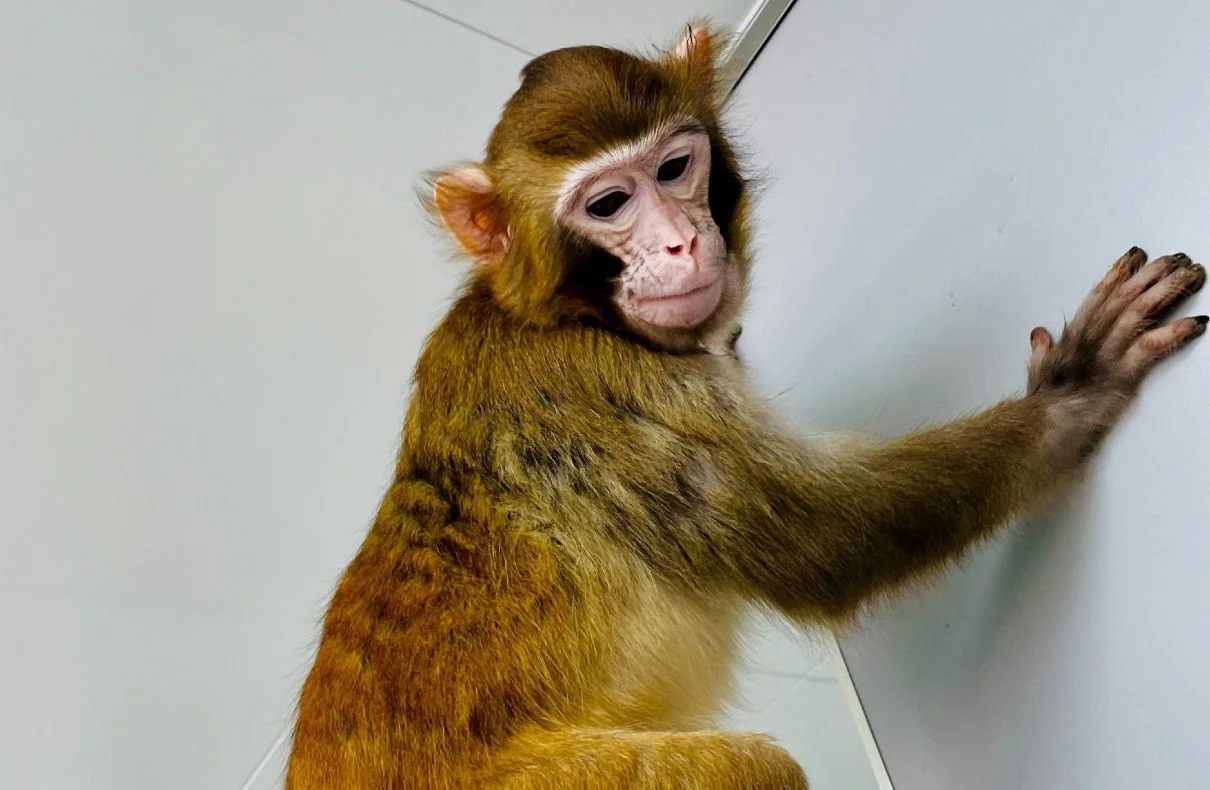
In a groundbreaking achievement, scientists at the Chinese Academy of Sciences have successfully cloned a rhesus monkey (Macaca mulatta) that has not only survived but thrived for over two years. This remarkable feat marks a significant advancement in primate cloning, as previous attempts had resulted in limited success, with cloned embryos often failing to develop properly or surviving only for a short period of time. The researchers utilized a modified technique that focused on improving the development of the cloned embryo’s placenta, a critical factor in the survival of the clone.
Cloning, specifically somatic cell nuclear transfer (SCNT), involves the transfer of genetic material from a somatic cell into an enucleated egg cell. This method, famously used to create Dolly the Sheep in 1996, has seen success in various species such as dogs, cattle, mice, and rabbits. However, primate cloning has proven to be considerably more challenging, with success rates as low as 1%. The Chinese researchers at the Chinese Academy of Sciences aimed to overcome these hurdles by focusing on the development of a healthy placenta, a key factor in the survival of the cloned embryo.
The placenta plays a vital role in providing nutrients and support to the developing fetus. However, in cloned embryos, the placenta often fails to develop properly, hindering the survival of the clone. To address this issue, the Chinese researchers conducted a detailed analysis of the developmental differences between normal in-vitro fertilization (IVF) embryos and cloned embryos. They discovered that the trophoblast, the outer layer of cells in the embryo that forms the placenta, exhibited abnormalities in cloned embryos. These abnormalities resulted in improper gene expression and hindered the attachment of the embryo to the surrogate mother’s womb.
To improve the survival outcomes of cloned embryos, the researchers developed a trophoblast replacement method. This technique involved replacing the faulty trophoblast layer of the cloned embryo with a healthy trophoblast from a non-cloned embryo. By doing so, the researchers aimed to create a clone with a properly functioning placenta, thereby increasing the chances of successful development and survival.
Iceland’s Volcano Cataclysm Shakes the Earth
The trophoblast replacement method was implemented by growing both a cloned embryo and a normal IVF embryo. The inner cells of both embryos were carefully extracted, and the cloned embryo was placed within the healthier placenta-forming layers of the IVF embryo. This process aimed to provide the cloned embryo with a functional trophoblast, improving its chances of survival.
Through the trophoblast replacement method, the researchers achieved the birth of a healthy rhesus monkey named ReTro. This male monkey has defied the odds, living for over two years and surpassing the lifespan of any previously cloned primate. The success of ReTro demonstrates the potential of the trophoblast replacement technique to improve the survival rates of cloned embryos.
The successful cloning of a rhesus monkey opens up possibilities for various avenues of medical research. One significant application is the production of genetically uniform monkeys for drug efficacy testing. With a large number of genetically identical monkeys available, researchers can more accurately assess the effects of drugs and treatments without the interference of genetic variability.
Additionally, cloned monkeys can serve as valuable models for studying complex diseases such as depression and anxiety. By creating genetically identical monkeys, scientists can better understand the underlying causes of these conditions and develop more effective treatments.
The field of primate cloning raises ethical concerns, particularly regarding animal welfare and the potential for human cloning. While the Chinese researchers argue that their work follows international ethical guidelines and is legally conducted in China, critics raise concerns about the moral weight given to intelligent animals and the potential slippery slope towards unethical practices.
Earthquake Strikes Oklahoma: A Series of Seismic Activities
Looking ahead, the trophoblast replacement method holds promise not only for primate cloning but also for improving the outcomes of conventional in-vitro fertilization (IVF). By addressing implantation issues caused by deficiencies in the trophoblast, this technique could increase the success rates of IVF for couples struggling with infertility.
However, further research is needed to refine and optimize the trophoblast replacement method. The low success rate of cloning attempts highlights the challenges that scientists face in this field. As the scientific community continues to explore the possibilities and limitations of cloning, rigorous ethical considerations and ongoing advancements in technology will shape the future of primate cloning and its potential applications.
